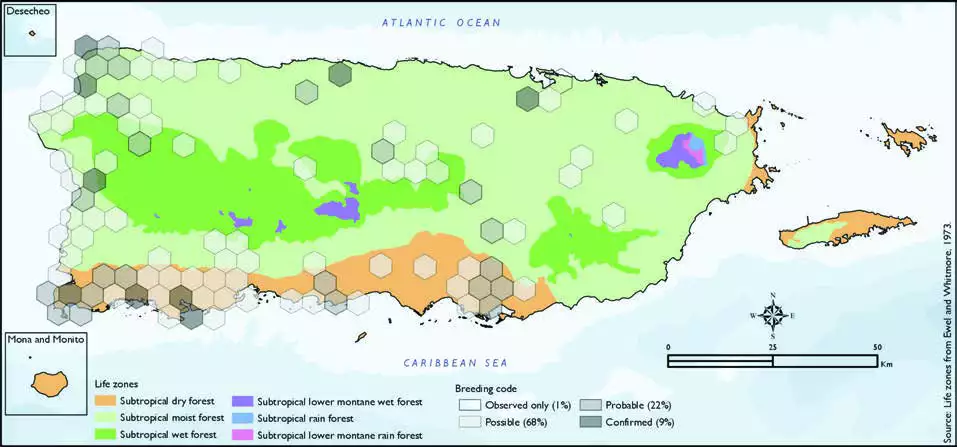Venezuelan Troupial
Description
The Venezuelan troupial (Icterus icterus) is the national bird of Venezuela. It is found in Colombia, Venezuela, and the Caribbean islands of Aruba, Curaçao, Bonaire, Trinidad, and Puerto Rico. Previously part of a superspecies simply named the troupial, it was recently split together with the orange-backed troupial and Campo troupial.
Venezuelan troupials are fairly large in size, with a long tail and a bulky bill. It has a black head and upper breast. The feathers on the front of the neck and upper breast stick outward, making an uneven boundary between the black and the orange of the bird's lower breast and underside. The rest of the orange color is found on the upper and lower back, separated by the black shoulders. The wings are mostly black except for a white streak that runs the length of the wing when in a closed position. The eyes are yellow, and surrounding each one, there is a patch of bright, blue, naked skin. Former Miss International Edymar Martínez wore the image as a national costume in 2015 in Tokyo, Japan, representing as the national bird of Venezuela.
Distribution & Habitat
The Venezuelan Troupial is native to northern South America
and islands off the north coast
(Jaramillo and Burke 1999), and
has been introduced to a number
of Caribbean islands (Oberle
2018, Raffaele and others 1998)
in association with the pet trade.
It is established on Puerto Rico,
where it is relatively common
in the southwestern region and
uncommon throughout the rest
of the island (Raffaele and others
1998). No published troupial
records are listed in Gemmill
(2015). It usually inhabits dry
deciduous forests, open wooded
country, palm groves, suburban
gardens (Oberle 2018), and arid scrublands (Raffaele and others
1998). The atlas fieldwork yielded
a total of 166 records within 101
hexagons or 21 percent of the
479 total hexagons (see map).
Of the 101 hexagons where this
species was found, breeding met
the atlas definitions of confirmed
in 9 percent (9) of the hexagons,
probable in 22 percent (22),
and possible in 68 percent (69),
while the species was observed
in 1 percent (1) of the hexagons
but without evidence of breeding
(see map). Atlas fieldwork suggests
that the species is expanding its
distribution into higher elevations
and eastward as also documented
by recent records of occurrence in
the Fajardo Christmas Bird Count. Venezuelan Troupial distribution. The map shows the highest breeding code by hexagon and overlaying the ecological life zones in
Puerto Rico. Note: percentages may not total 100 due to rounding. 265Venezuelan Troupial/Turpial Venezolano

Breeding Habits
Previously published reports indicate that the Venezuelan
Troupial breeds primarily from
March to June (Raffaele and others
1998). The nest is a deep cup-
shaped structure that is usually
built in a cactus or among thorny
scrub (Raffaele and others 1998).
Atlas results show that this species
breeds throughout the year with
the most breeding activity from
March to June (see chart). Overall,
the breeding activity peaks in May,
and during this month it mostly
takes place within the subtropical
dry forest life zone (see chart).
Overall, results (see table and map) show that this species breeds
primarily in lower elevations
mostly within the subtropical moist
forest life zone (55 percent of the
hexagons) and the subtropical
dry forest life zone (38 percent of
the hexagons) and rarely breeds
at higher elevations within the
subtropical wet forest life zones
(7 percent of the hexagons).
Conservation
The current global population
trend of the Venezuelan Troupial
has not been quantified or
assessed, but the species is
described as fairly common but patchily distributed (Stotz and
others 1996). Due to the lack
of evidence for any threats or
declines, the overall population
is suspected to be stable. This
species is currently listed as a
species of least concern by the
IUCN (BirdLife International 2018).
Locally, this species is not listed in
any of the threatened categories
of PRDNER and USFWS. In Puerto
Rico, the Venezuelan Troupial
has a protected habitat in land of
about 9 percent or 210 km2 of the total area covered by the hexagons
where evidence of breeding was
found for this species (2372 km2).
Related Species
Family:
icterids